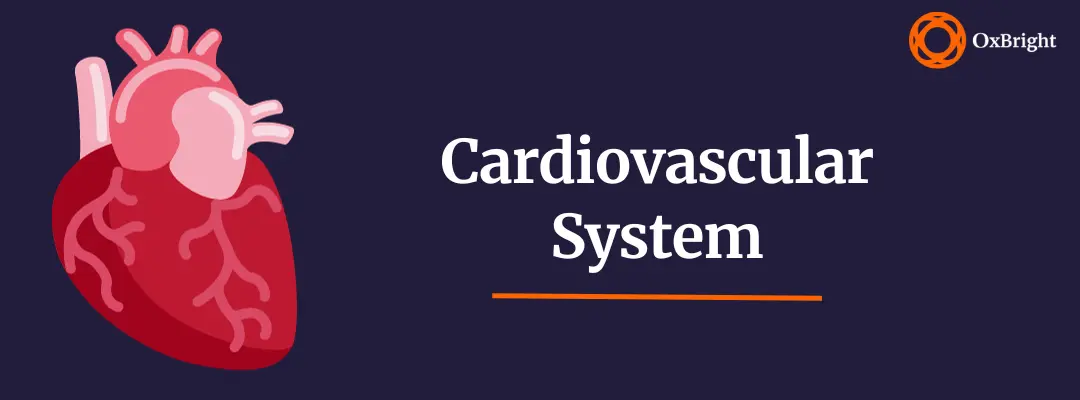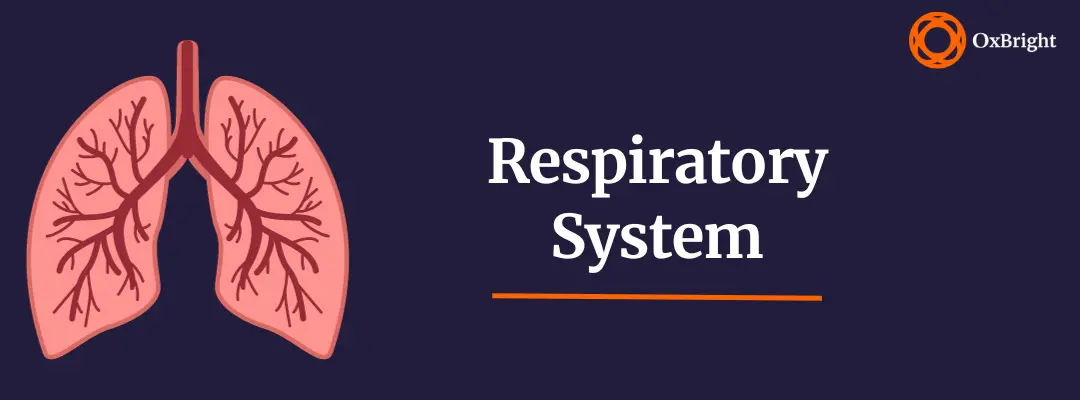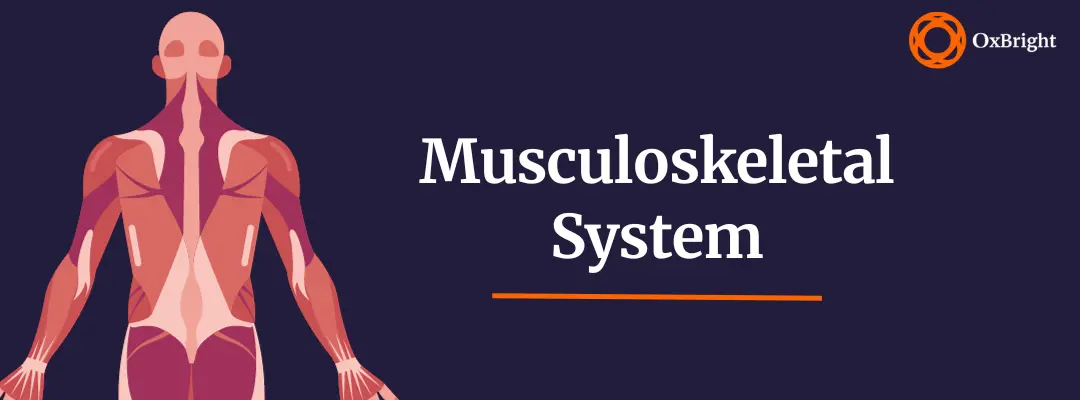Medical Terminology Made Simple: A High School Student’s Guide

Every professional field has its own terminology – a unique set of words and phrases that make communication quicker and easier.
Take a pilot’s well-known “roger that,” for example. Now I might not be a professional pilot, but I think it’s used to acknowledge and agree with another person’s statement.
What Is Medical Terminology?
Medicine is no different. Doctors, nurses and surgeons all use specialised medical lingo to communicate with one another more efficiently across different clinical settings.
However, there’s an important consideration to keep in mind. Medical staff regularly communicate with patients and families, so they need to pay extra attention when using medical jargon. Terminology isn’t necessarily accessible to everyone, and it’s important to make sure that you communicate clearly, in a way that everyone can understand. This is essential to ensure patient safety, gain informed and valid consent, and avoid unnecessary stress for patients and families.
Medical terminology is an amazing way to improve communication, but only when used appropriately and with the right people!
Why Should High School Students Learn Medical Terminology?
I. A boost to med school applications
If you’re considering a career in Medicine, demonstrating a working knowledge of medical jargon is a great way to boost your application to medical school. Dropping some medical terms here and there illustrates your vested interest in the field, and will certainly help you ace your med school interview!
However, this naturally comes with a caveat – make sure you know what you’re talking about! Tutors are likely to ask further questions about the terms and phrases you use at the interview, so only use terms you’re confident with.
II. A strong foundation for medical education
A solid foundation of medical terminology can also help to ease you into life as a medical student. The first few months, or even years, as a medical student can be quite difficult. The learning curve is a steep one, and the wide range of difficult and unfamiliar terms can be somewhat overwhelming.
Now, I’m not suggesting you need to memorise the whole Oxford Concise Medical Dictionary, but knowing the meaning of a few common terms can be really valuable in grasping complex medical concepts. I guarantee it’ll make your life easier in your first anatomy and physiology classes!
III. Early exposure to medical career paths
Learning medical terminology as a high school student will also provide early exposure to a range of career paths within healthcare.
Medicine is a diverse field that goes beyond doctoring and nursing, so understanding the variety of potential paths will help you make informed decisions about your future.
If you’d like to gain real-life experience in the field, our online Medicine courses and Medicine internships are perfect for aspiring medical students.

IV. Development of skills and confidence
Communication skills are essential in medical practice. Developing a strong understanding of common and widely-used medical terms will set you up for success at med school, allowing you to engage in meaningful discussions with teachers, peers and healthcare professionals right off the bat.
Before you know it, you’ll find yourself able to articulate complex medical concepts effectively, and tackle challenging subjects and conversations with confidence!
How Do I Learn Medical Terminology?
Learning medical terminology is certainly not an easy task – often words seem very similar to others, but have completely different meanings.
There are a few strategies you can adopt to make retaining medical terms a little easier, however. You might want to try:
- Flashcards
- Acronyms
- Diagrams
- Mnemonics
- Practise, practise, practise!
Some of these will definitely come in handy when you’re in medical school, so this is a good opportunity to work out which methods work best for you before you get there!
It’s unlikely you’ll use a lot of medical terminology in everyday conversations, but try to incorporate it where you can. Explain any new terms you’ve learnt to a non-medic friend or family member; they’ll likely be impressed by your knowledge, and you’ll have gotten some practice in!
Medical Terminology: Basic Anatomy and Body Systems
Without further ado, we’ve put together a list of some common medical terms you’ll come across, so you can get ahead of the game.
Let’s start with the basics!
Cardiovascular system
Heart
The heart is one of our most important organs. It pushes blood around the body and up to the brain. Imagine the heart as a pump, to which tubes and vessels are attached.
Veins, Arteries and Capillaries
Vessels that carry blood towards the heart are known as veins, whereas vessels that carry blood away from the heart are known as arteries. A good way to remember this is:
A-rteries carry the blood A-way from the heart
The aorta is the biggest artery in the body, and it stems directly out of the heart. The word aorta comes from the Greek meaning “to spring out” – looking at the heart, you can see the aorta springing out from the top.
Arteries become smaller and smaller as they travel further away from the heart, eventually becoming capillaries. The word capillary comes from the Latin capillus, meaning hair, so it’s no surprise that capillaries are extremely thin.
The blood flows from the arterial side of a capillary to the venous side of a capillary. As the blood travels in the capillary bed, it unloads oxygen and picks up carbon dioxide.
Venous capillaries become bigger and bigger as they move closer to the heart, until they’re known as veins.
Veins spill their blood inside the atria, where the blood flows into the ventricles.
So, let’s sum up the journey of the blood: veins carry the blood towards the heart, and take it to the entry hall (atrium); the blood then flows into the belly of the heart (ventricle) and is then taken away by the arteries.
Systole and diastole – it’s a mouthful, but the meanings are easier than you think!
Systole comes from the Greek meaning “to contract”, whilst diastole means “to expand”. These two words refer to the cardiac cycle.
When the heart contracts and pumps the blood out, it’s said to be in systole; when it relaxes and allows blood to rush in, it’s said to be in diastole. A good way of remembering this distinction is the mnemonic “cosy red”:
CO-ntract SY-stole; RE-lax D-iastole
Respiratory system
Lungs
The lungs are near the heart. The heart by itself would be useless if the lungs weren’t there to oxygenate the blood.
When you breathe in, you’re inhaling air; when you breathe out, you’re exhaling (ex meaning “out”).
Pharynx and Larynx
The air you inhale flows through your mouth, into the pharynx and larynx.
The word pharynx means “throat” in Greek – no confusion there! – but the word larynx is funnier in origin. Lurco is a Latin verb that means “to eat greedily”. When you fill your mouth with food, eating quickly and perhaps without chewing, food can sometimes go down the wrong tube. Guess where? Correct, in the larynx!
Trachea, Bronchi and Alveoli
Next, air flows into the trachea, also known as the windpipe.
Trachea derives from a Greek word that means “rough”. If you feel your windpipe at the front of your neck, rather than a smooth tube, you’ll notice some bumps. These are cartilage rings that ensure the trachea always remains wide open – unless you “eat greedily” and block your larynx, of course!
The trachea then divides into two bronchi. The word bronchus comes from the Greek meaning “to moisten”, as the air is moistened and warmed as it passes through the airways. An easy way to remember the word bronchus is that it’s very similar to the English word “branches”; bronchi and bronchioles are nothing more than tubes that branch off the main trachea.
The terminal airways are known as alveoli (from the Latin meaning “small cavity”). You can think of these as the leaves hanging from the branches. This is where gas exchange happens: carbon dioxide is exhaled, and the blood is oxygenated.
Digestive system
Gastrointestinal Tract
The digestive system is another very important set of organs. It’s sometimes referred to as the gastrointestinal tract, as the word gastro comes from the Greek meaning “belly”.
Oesophagus, Stomach and Intestines
After eating, food passes from your mouth into the oesophagus, from the Greek meaning “to carry food”. The food then empties into the stomach where gastric juices are secreted, which are crucial in aiding the digestion of proteins. The digested food is then passed through the intestines.
Liver
The digestive system has several organs that work together to digest food, one of which is the liver.
The liver sits just below the right lung and is primarily a filter. The word “liver” comes from Old English and means “sticky” or “slimy”, probably referring to its appearance – a bright pink, slimy mass. The liver filters the blood and produces a substance called bile. The bile helps the digestion of fats, breaking them down into smaller molecules.
Gallbladder
Once produced, bile is stored in the gallbladder – “gall” meaning bile in Anglo-Saxon, and “bladder” meaning “something that can inflate”.
The gallbladder is tucked away within the liver structure, and is a common reason for emergency surgery if it gets upset.
Pancreas
The pancreas is a fundamental organ for the well-being of a person. It not only aids the digestion of fats, proteins and carbohydrates, but also regulates levels of glucose in the blood.
As you may have realised, lots of anatomical terms have been named based on the way things look. Pancreas literally means “all flesh”, and it refers to the fleshy appearance that the pancreas has.
Musculoskeletal system
Muscles
The word “muscle” comes from the Latin musculus, which means “tiny mouse”. We need some imagination here, but according to the early anatomists, contracting muscles resembled little mice running around!
Bones, Joints and Tendons
Bones and the skeleton make up the frame of the body, with muscles contracting to allow for movement. Joints connect individual bones, and are strengthened by ligaments that keep the bones in proximity. The muscles, with their contraction, move the joints.
To apply tension, muscles are attached to bones by the tendons. Tendon is a Greek word that means “to stretch”, so think of them as ropes that connect the muscle ends to the bones at either side of a joint.
Muscle movements either increase the angle of the joint, or decrease the angle of the joint.
Consider your elbow joint for a second – when you decrease the angle of your elbow joint, bringing your hand closer to your collarbone, you’re flexing the elbow joint; when you do the opposite, you’re extending the elbow joint.
Abduction and Adduction
When you move your limbs away from the midline of your body, you’re said to be abducting your limbs. By contrast, when you move your limbs towards the midline, you’re adducting the limb.
This is a major headache for first-year medical students, but really it’s very intuitive. The prefix ab- is Latin for “away”, and the prefix ad- is Latin for “towards”. Again, practice makes perfect!
Medical Terminology: Common Medical Terms
The names of diseases and conditions are some of the most widely used terms within the medical field.
Diseases and conditions
Diabetes Mellitus
Most people know this condition by its first name, diabetes, but Mr. Diabetes has a last name too. What does “mellitus” mean? The word mellitus comes from Latin and means “sweet”.
The word “diabetes” has a much more complex derivation, but means, believe it or not, excessive discharge of urine.
Excessive discharge of sweet urine.
I kid you not.
People suffering from diabetes mellitus have a large amount of sugar in their blood, and some of it will spill into the urine as the blood is filtered by the kidneys. Hence the name of the disease, which is not too far-fetched after all!
Diabetes mellitus is very different from another condition that has a similar name, diabetes insipidus. I’ll leave it to you to work out the difference.
Chronic Kidney Disease
Chronic kidney disease (also known as CKD) is an increasingly common condition where the kidneys suffer over a long period, becoming damaged.
The word “chronic” is key here. When doctors use the word “chronic” in front of a disease, they mean that the disease is long-standing, or has slowly developed over a long period. The opposite of chronic is “acute”.
Acute kidney disease, or acute kidney injury, still implies damage to the kidneys but has very different causes, very different treatments, and very different outcomes – the difference a single word can make!
Heart Failure
Heart failure is an increasingly common expression used by clinicians. The heart fails to do its job of pumping oxygen-rich blood around the body.
Sometimes it is straightforward.
Coronary Artery Disease
We’ve learnt what an artery is, but what on earth is a “coronary”?
Coronary comes from the Greek meaning “crown”. The coronaries are the arteries that supply the heart muscle with oxygenated blood. They stem out of the aorta and wrap around the heart like a crown – you do need some imagination, but if you close your eyes, you can just about picture it.
Hypertension
One of the biggest risk factors for coronary artery disease is hypertension. “Tension” means “pressure”, and hyper- is a prefix that means “high”, a.k.a high pressure.
High blood pressure within the coronary arteries is a recognised risk factor for having a heart attack.
Stroke
High blood pressure also increases the risk of having a stroke. A stroke is a condition where there’s reduced blood flow to the brain, leading to the death of brain matter.
The early Greek physicians used to describe patients affected by stroke as being struck with violence in their heads, and used the word “apoplexy”.
Modern physicians have adopted the word “stroke” instead.
Anaemia
“Anaemia” is a word you’ll encounter often in your medical career. Clinically, anaemia refers to low levels of haemoglobin in the patient’s blood.
The Greek word for blood is haima, and the prefix -an means “without”; literally, anaemia means “without blood”. However, it’s not as literal as it sounds! Rather than being without blood, patients affected by anaemia have a reduced number of red blood cells so are less able to carry oxygen around their body.
Pneumonia
A common condition that affects the lungs is pneumonia.
The word pneumon in Greek means “lung”, and pneumonia is an inflammatory condition that affects the lungs. It can be due to infection, but it can also have a non-infectious cause.
Influenza
Influenza is caused by a virus, and is an acute condition that affects the airways.
The name is directly derived from the Italian word influenza, which used to mean “outbreak”, probably referring to the way in which the flu spreads from person to person.
Asthma
Asthma is a very common chronic condition. The word “asthma” comes from the Greek meaning “panting”. Patients with asthma can struggle to catch their breath when they’re having an attack, so the condition’s name makes a lot of sense.
Chronic Obstructive Pulmonary Disease
Like asthma, chronic obstructive pulmonary disease, also known as COPD, is a chronic condition affecting the lungs.
COPD is a long-standing, slow-progressing disease that affects the lungs (“pulmonary”), characterised by impaired airflow through the airways, as though the airways were obstructed or limited.
Osteoporosis
Osteoporosis is a common condition among the elderly population, and happens when more bone matter is broken down than built, leading to bone weakness and fractures.
Osteo is Greek for “bone”, and poros for “passage”, meaning “passages within the bone”. Clinically, it refers to the appearance of bones affected by osteoporosis.
Arthritis
Arthritis is another common condition affecting the bones. Arthron is the Greek word for “joint”, and arthritis means inflammation of the joints. Two main types of arthritis are recognised: osteoarthritis and rheumatoid arthritis.
Osteoarthritis happens when the cartilage and membranes between two ends of a joint are worn down, so the joint becomes stiff and painful to move.
Rheumatoid arthritis is an autoimmune disease, in which the immune system of a person attacks the healthy joint and bone cells, leading to chronic inflammation and degeneration.
The word “rheumatoid” derives its meaning from the Greek rheuma meaning “humors” or “bodily fluids”. It’s unclear how this word has been associated semantically with autoimmune bone degeneration, but it may be due to the fluid collection that develops within the joint space affected by this type of arthritis.
Depression
Depression awareness is fundamental in recognising and helping people who are suffering from it, but what does “depression” mean?
The Latin verb deprimere means literally “to press down”; so you can see how this word can be applied to mood and emotions, giving you the modern meaning of depression.
Migraine
“Migraine” is a slight modification of the Greek word hemicrania, which means “half skull”. Migraine is defined as severe pain felt in one side of the head.
Once again, breaking down the word into single components and roots can help you work out the original literal meaning, and even understand the clinical meaning.
Procedures and Treatments
Surgery
The word “surgery” comes from the Latin chirurgia, meaning “work done by hand”. Surgery is one of the main paths that many medical students take after university.
Endoscopy
“Endoscopy” means “to look inside”, as composed by the words endo (meaning “internal”) and scope (meaning “to look”).
Endoscopy is used by both medics and surgeons to visualise the insides of someone in a minimally-invasive way.
Dialysis
Dialysis is a widely-used procedure to remove toxic waste from someone’s blood when their kidneys are failing.
It’s a composite word, dia and lysis, and it means “to separate” or “to set free” – ridding the blood of all the toxins and waste.
Angioplasty
Angioplasty is a great word, and a great procedure! Angio refers to vessels, usually arteries, while plasty means “to mould” – to mould an artery.
When used in a coronary artery, we refer to it as “coronary angioplasty”, and it’s one of the treatments for a heart attack or reduced blood supply to the heart muscle.
Vaccine
We know that a vaccine is an injection that reduces the risk of catching a virus or another infectious disease, but why is it called a “vaccine”?
The word “vaccine” comes directly from Latin – and it means “cow”. The first vaccine developed was against cowpox – a relative of smallpox, and an extremely infectious disease that caused many deaths in the last century.
Mastering medical jargon can seem daunting at first, but with lots of practice and some proactive curiosity, you’ll soon be able to articulate complex medical concepts like a pro!
Effective communication will make you an amazing doctor or healthcare professional, so there’s no better time to start improving your communication skills than now!

By Diego Balassini
Diego is a practicing junior doctor, having graduated from Cambridge University, and Barts and The London School of Medicine. His undergraduate thesis focused on cancer biology and therapeutics. He is planning a career in reconstructive and plastic surgery, hoping to draw together innovations from tissue bioengineering, regenerative and stem cell research.
Recommended articles
OxBright Tutors Share Their Top Tips for High School Graduates
Finishing high school can be a really intimidating juncture – you’re leaving the security of a routine you’ve followed for five plus years, and you’re faced with more options and less structure than ever before. Oh, and your decisions now can shape your future in a...
Which Career Is the Best Fit for Me?
Choosing your career path is one of the first big steps you’ll take as a young adult, so it can often be a daunting prospect. However, the possibilities are endless, and as long as you base your choices on your personal preferences, passions and interests, your...
How to Make a Study Schedule That Actually Works
Studying can sometimes feel like a daunting task, no matter how old you are or what level you’re studying at. You might be left thinking: How can I balance academics with my other commitments? How do I stay consistent with a study schedule? Is there a “good” or...









